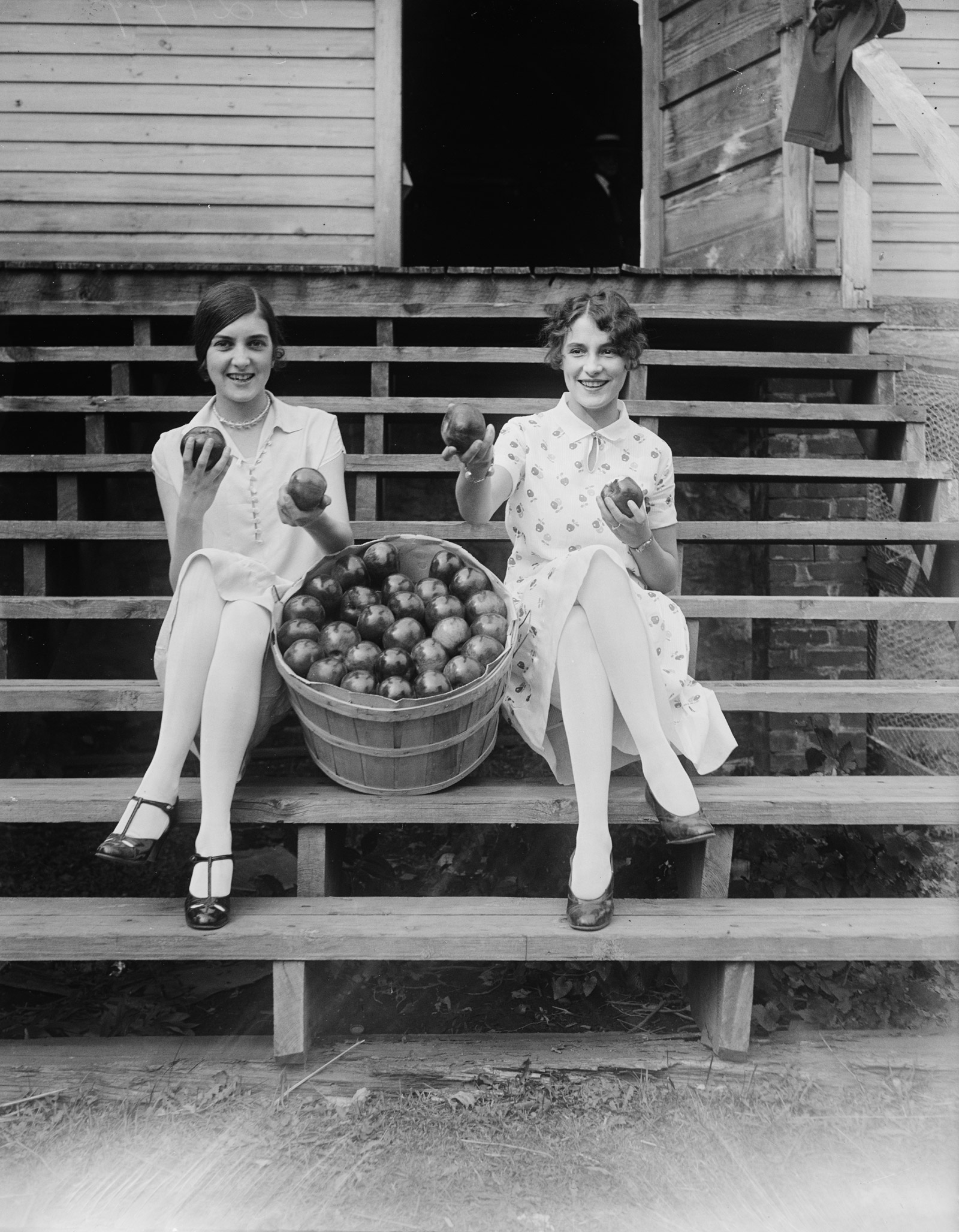Hard Cases for a Handle Theory
Chalk, soap, cigarettes
Jeff Dolven

Consider how you hold a piece of chalk. Not by the handle: it doesn’t have one. Or, if it does, that handle is of the chalk’s own substance, flesh of its flesh, distinguishable only because it is the bit left in your hand when you can’t write anymore. A useless nub, or stub, or butt. Its persistence is a faint embarrassment, a remainder you don’t know what to do with—maybe you should stuff it in your pocket, or leave it in the tray with the erasers, or drop it on the floor and grind it into dust with your heel. It’s a waste, surely, just to throw it out. But it cannot be grafted onto another piece of chalk, not without gratuitous ingenuity, nor can it be used to hold anything else. It’s like the end of a pencil or of a filterless cigarette. Life is a midden of such abandoned handles. You didn’t even know they were handles, until they lost their grip and you were left holding them in a pinch, a pinch that can narrow, without your noticing, to contempt.
Common as they are, I take the class of such objects to be small. Chalk, cigarettes, wooden pencils, and (unless you are among the frugal grafters) the leftover lozenge of soap that turns out to have held the rest of the bar. Are there others? Small, and yet disproportionately prominent in life, especially in the sort of thinkerly, all-too-grown-up life where people write and teach, and clean up before they do things, not just after, and smoke to fire up the recalcitrant brain and the sleepless body. Knowing to take something by the handle and use it properly, even just to tell the handle from the thing—these are accomplishments of the complex developmental, historical condition of adulthood, with its unsentimental skills of picking up and setting down. To base a theory of the handle on chalk, which hides its handle until the handle has no use, is to begin with an especially hard case. Begin with cases, however, I must, for a proper theory will not be a theory from first principles. There is always something secondary, even tertiary about a handle, located as it is between the hand and the thing. Roll that last bit of chalk around in your mind for a moment, then, and try to decide what to do with it.

In the meantime, before getting to some more straightforward examples, it will be useful to clear away some of the handleless objects. Sand has no handle; neither does the sea. You cannot close a grip on them. The same goes for large things built to stay put, like houses. Things that move by themselves also typically lack handles. A car door has a handle, but not a car; when the scrapman comes, his claw grabs it rudely by the roof. Objects like these, immobile or self-propelled, may still present accidental handles (like that roof), parts more convenient to a grip than other parts. You might shift a bookshelf, for instance, by grasping a shelf, but it’s an awkward maneuver, and you wouldn’t afterward call that shelf the handle. Then there are objects like baseballs and sandwiches, so well adapted to the hand that they would seem to be all handle. But “all handle” violates something in the concept too—a sense of the handle as separable and subservient to the thing. A handle implies hierarchy. Perhaps the bread is subservient to the ham? But no, good bread is integral to the taste of the sandwich, and, besides, it is equally edible, sometimes even the best part. And it does not remain; there is no orphan bit. You push the last of it into your mouth with your flattened fingertips, and the sandwich is all gone.
From this exercise in field clearing, a few positive criteria for the dedicated handle can be derived.
It must have a grip.
That is, the handle must afford itself to the hand to which it owes its name. The hand must be able to close around it, and transfer enough force to lift or turn or otherwise manipulate the thing. A hammer is a simple instance, divided between handle and head, along a line easily recognized, often a border between wood and steel. If handle and head are properly fixed to one another, the resulting object is the very definition of ready-to-hand, zuhanden, Martin Heidegger’s word for the tool that disappears into its use, barely present to the handler.[1] So much more does the handle disappear, a tool for the tool. If the hand has a grip on the handle, does the handle have its own grip on the thing it is a handle of? Does the hammer handle grip the head? It is more usual to say that they are attached. Not, of course, in any emotional sense—just attached, so that neither can do much of anything without the other.
Still, separateness is also important to the concept.
It must be separate.
Let’s test that claim on a trickier case, a flower pot. Not all dedicated handles present themselves to a power grip, that whole-handed channel for the strength of arm, shoulder, torso.[2] I brace the side of my index finger under a pot’s raised rim, a modest ornament to its plain, tapering shape (I have in mind a garden-variety clay pot), also good for picking up something that is frequently moved. Perhaps getting hold of it is more like an embrace, even encompassing it, containing it, the way that the pregnant pot contains the flower. Is the pot, in turn, a handle for the flower? (And the pot’s handle therefore a handle’s handle?) No, even though the pot keeps our hands out of the dirt, an insulating function—protecting the hand from soil, as from heat, cold, or wet—also important to handles. If you take the flower out, you still have a pot, not a flower-handle. It has an independence that a handle lacks. The handle, for its part, has only its separateness. If you were charged with removing the flower pot’s rim-handle, you would know where to cut, and you would be left with a shorter pot and … something else, a clay collar, barely identifiable.
The hand can wrap around a teacup, too. But a teacup usually has an ostentatious handle, at least in the West. The German sociologist Georg Simmel, the leading handle theorist of the last century, treats the handles of cups, and of their fancy cousins, vases and bowls, as a special site for the reconciliation of use and form. “Utility and beauty come to the handle as two unrelated demands,” he writes. The handle makes “a mediating bridge … a pliable joining of hand with bowl, which, with a palpable continuity, transmits the impulse of the soul into the bowl, into its manipulation.”[3] But the teacup’s handle, a loop to slip two fingers through, often with a playful curl at its base—is it not a little arabesque of aesthetic independence? “Say, what a beautiful handle!” Then again—should a wayward child break that elegant swan’s neck, there is no confusion about what is lost. The handle has broken off the vessel, not vice versa. The handle cannot stand alone. It is not only separate, but
It must serve.
Recall the hammer and its head. Both parts of the teacup, if they cannot be glued together, may go into the trash, but if you are going to save one of them, there is little question of which. The situation may cause dismay, but no conceptual embarrassment.
But conceptual embarrassment was where we began, with that residual handle, so hard to tell from its object, that useless stump of useful chalk. A theory must not shy away from its sources of shame. So, take an apple. Is there such a thing as a natural handle? Which is to say: a part of the natural thing that can be distinguished from the thing proper by its instrumental subservience? Weighing the apple in your palm, you might suspect that the handle is the apple skin, by which its sweet, moist interior can be transported neatly to your lips or the lips of someone you love. That is the handle for you, though here again it might be more natural (natural?) to call it a container, or a wrapper. Perhaps, then, the handle is the core, holding the apple flesh the way a popsicle stick holds a popsicle. (The way the secret handle inside the soap holds the soap?) Or perhaps the popsicle comparison has it backward, and the apple is the handle for the core, or, more precisely, the flesh is the handle for the seeds. It is the flesh’s sweetness that permits—downright encourages—the raccoon to get a grip on the apple’s germplasm and carry the black pips far away from the tree. The apple flesh, qua handle, disappears into the task of apple propagation without remainder. That is a relief. But along the way, we have lost the hand, and this apple seems to be all handle, one way or another—skin, core, and flesh. Which is to say, no handle at all. Perhaps it is safer to say:
It must be made.
Made, that is, not natural. The apple is excluded, and likewise the flower, in spite of its stem. The handle is made by a hand to fit the hand. Let’s place the apple, then, where it should have gone, in the catalogue of non-handles at the start. My mistake.

That last law should exclude us, too, should it not—us handymen, us handypeople? Does a human have a handle? Taking someone by the hand doesn’t afford much leverage. You usually get tangled up in some kind of greeting or ritual of contact, and the simple authority of use is dissipated. There is also the problem of whose hand is the handle, and whose the handling hand. Reciprocity seems to violate the concept. (As, formally speaking, does recursiveness: a handle for a handle is already absurd, let alone a handle for a handle for a handle, etc.) Let us say:
It must not touch.
Meaning, must not touch in some strong sense, with some feeling in it. Perhaps, it must not touch back. If it did, it would be more complicated to let go of or let drop. There are other candidate parts of the body, of course, like the shoulder or the small of the back or the back of the neck, which give a manhandler more control, and there is the handy ear of the recalcitrant student. But all of them touch the handler too, and so, I would like for them also not to count.
There is one more candidate I can think of, however, even when all the natural handles have been excluded. For at least a couple of centuries, we’ve been able to use the word “handle” to mean “name.” A name would seem to be disqualified from true handledom, held as it is by the mouth, not the hand. Does the name lift, hold, or manipulate the person, or the thing? No. Analogy has definitively taken us too far. Then again—if a metaphorical reach is required to define the name’s grasp, still the name-as-handle does meet the other criteria more strictly: it is separate, it serves, it is made, and it does not touch. Then again (one last time)—it can outlast its object without losing its use, which a dedicated handle cannot do. In fact, its usefulness begins when it is distant from what it names, cases of labeling aside. And it has a special usefulness when its object is gone altogether, gone into the past, and the name is what is left behind. It is an embarrassment to hold that obdurately surviving handle, that chalk or cigarette or pencil stub, in your hand, but a name after its thing, rolled around the mouth, might even have a new innocence, or at least a new immunity from forms of correction or regret.
• • •
Back in the early ’70s, there was a woman who smoked cigarettes, and had since she was a teenager. By then she was a mother, with two young children, five and three; and though the decade hadn’t gotten around to worrying much about second-hand smoke, the older child, a son, hated the smell and complained steadily, especially in the closed quarters of the family car. He was not very tolerant, but then again, he was only five. His mother decided to quit, and because it was so hard, she signed up for a program called SmokEnders. SmokEnders got its start in 1969, and found a growing market as evidence of the risks of smoking mounted; the company hosted six-week seminars in hotel conference rooms and corporate campuses across the United States and Canada and beyond.[4] It survives today on the web, with a logo that bends the name over a broken cigarette, but back at the beginning, the advertising was more enigmatical and charismatic: the capital E was replaced by an E-shaped piece of optical trickery first introduced to the psychological literature as the “three-stick clevis,” now better known as the “impossible trident.”[5] It is a letter from an Escheresque alphabet, ambiguously two- and three-pronged, the graphic cues to depth impossible to reconcile in three dimensions. Each prong is a cylinder, like a cigarette. The idea must have been that if you reached for one in need, it would vanish in your grasp.
Anyhow, one of SmokEnders’s techniques was to have participants take their final cigarette butts, as their habit tapered, and drop them in a mason jar of water, which would be left somewhere ready to hand, say on a shelf halfway down the stairs to the basement. Whenever the ex-smokers felt a craving, they were supposed to go down there, open the jar, and take a deep drag from the awful brew. It was an ingenious way to put those discarded handles, those perfectly good, perfectly useless stubs, to use again—even better than vanishing, an olfactory slap to the hand that reaches for them. So what if a waft of that lush tobacco fetor remained impossibly delicious? The woman quit anyway, and the magic jar eventually disappeared, probably lost in a move to another house.
A cigarette is a way of getting a handle on life, a precarious and vanishing finger’s breadth of a grip on the workday or motherhood or whatever—one you can hold till it burns down to your skin, and then you have to let go of the last bit, flesh of its flesh, that held the rest all along. The cigarettes were Kools, with filters, so they wouldn’t actually burn your fingers, and the handle was of a different stuff—cellulose acetate, as it happens. But we are too far gone into analogy to stop now. The point is, you are holding something, which you didn’t know was just the handle, but now it is the only thing left. We might wish sometimes for a handle with which to take hold of each other, because it would be easier to let go. Then sometimes we discover we had a kind of handle-grip all along. Cigarettes, at any rate, are on the way out, what with vaping and patches and scare labels on the packaging. They are going the same way as chalk, in the age of the whiteboard—and pencils, for that matter, when no one writes letters home. They are all guttering down to the socket, all making the awkwardly incomplete exit that leaves a nub of wax and string that used to be a candle. Not broken, exactly, that remainder, but all too present, for want of a proper ritual of farewell or a dedicated recycling bin. History may scrub them all away, as things we have grown out of. But how can life help leaving a lozenge of soap in your palm? You can rub your hands briskly together under the tap to make it go away, though that hardly counts as using it up.
- “Things that cannot be used, for example, a tool that will not work, can be conspicuous only in and for someone using them. Even the most sharp and persistent ‘perception’ and ‘representation’ of things could never discover something like damage to the tool. The using must be able to be hampered so that something unhandy can be encountered.” Martin Heidegger, Being and Time, trans. Joan Stambaugh, rev. Dennis J. Schmidt (Albany: State University of New York Press, 2010), p. 338.
- Alexander Kluge and Oskar Negt offer a wonderful taxonomy of grips in their History and Obstinacy, ed. Devin Fore, trans. Richard Langston et al. (New York: Zone Books, 2014), pp. 90–91.
- Georg Simmel, “The Handle,” trans. Rudolph H. Weingartner, The Hudson Review, vol. 11, no. 3 (Autumn 1958), pp. 376, 373.
- Jacquelyn Rogers, the founder of SmokEnders, tells the story of its early years in a “personal note” that prefaces You Can Stop Smoking (New York: Pocket Books, 1995).
- D. H. Schuster remarks on this “new type or kind of ambiguous figure” in his one-page article “A New Ambiguous Figure: A Three-Stick Clevis,” The American Journal of Psychology, vol. 77, no. 4 (December 1964), p. 673. He claims to have sighted it “in the advertising section of an aviation journal.”
Jeff Dolven is a critic and poet who teaches at Princeton University. His books include Senses of Style (University of Chicago Press, 2018), *A New English Grammar (dispersed holdings, 2022), and the admittedly hasty Take Care (Cabinet Books, 2017). He is an editor-at-large at Cabinet.
Spotted an error? Email us at corrections at cabinetmagazine dot org.
If you’ve enjoyed the free articles that we offer on our site, please consider subscribing to our nonprofit magazine. You get twelve online issues and unlimited access to all our archives.